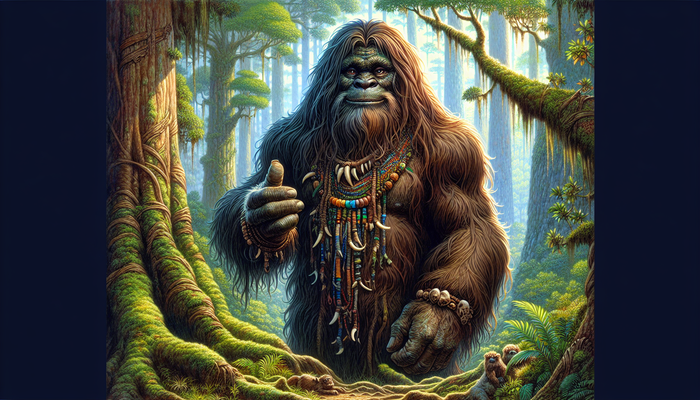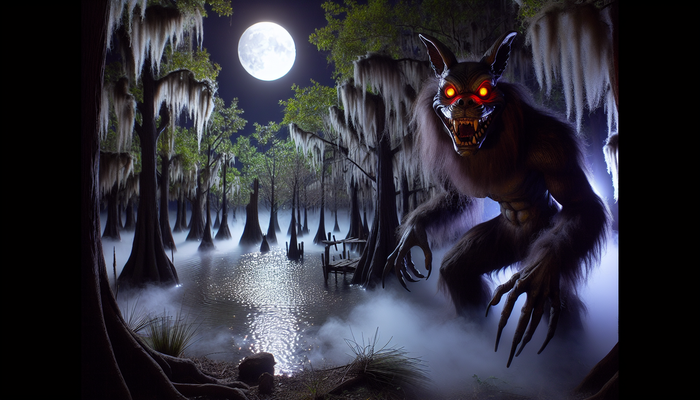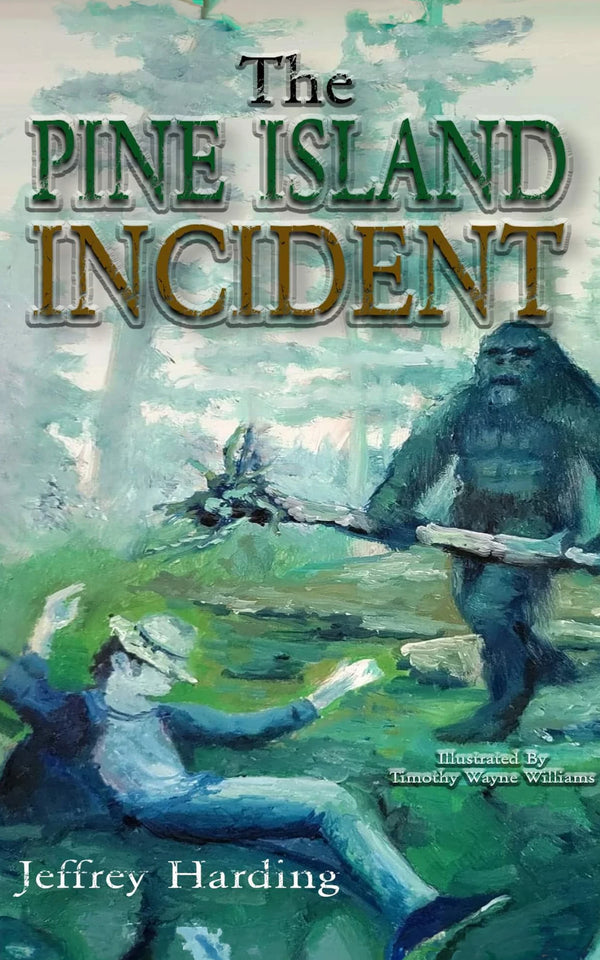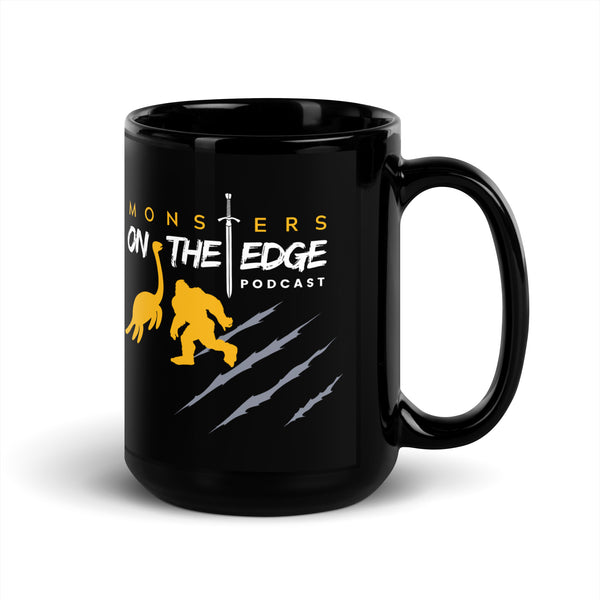Mysteries of California's Bigfoot Sightings
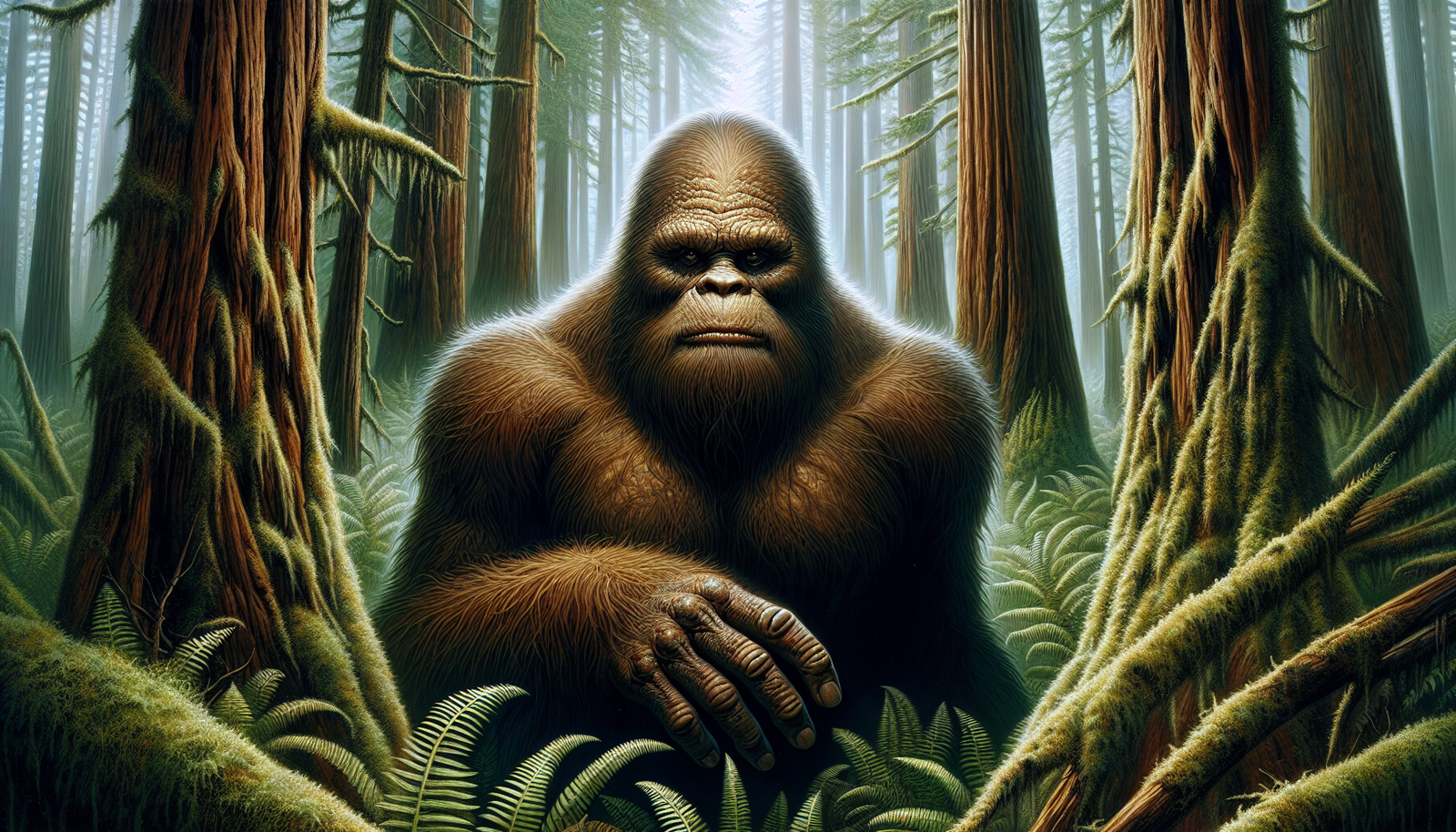
By Oliver Bennett, Cryptozoologist
In the misty forests and rugged mountains of California, a legend has persisted for generations, captivating the imaginations of locals and visitors alike. This legend, known by many names—Sasquatch, Bigfoot, or simply the "wild man of the woods"—has become an integral part of the state's rich tapestry of folklore and mystery. As a researcher and historian, I have long been fascinated by the enduring allure of Bigfoot, particularly in California, where reported sightings and encounters have made it the epicenter of Sasquatch activity in the United States.
The quest to unravel the mysteries surrounding Bigfoot has taken me on a journey through time and across the diverse landscapes of the Golden State. From the towering redwoods of the north to the remote mountain ranges of the south, I have delved into historical accounts, Native American legends, and contemporary eyewitness reports, seeking to shed light on this elusive creature. What I have discovered is a complex web of stories, evidence, and theories that have only deepened my curiosity and respect for the Bigfoot phenomenon.
In this article, I invite you to join me on an exploration of California's Bigfoot legacy, as we trace the origins of the legend, examine the most compelling evidence, and consider the various perspectives that have shaped our understanding of this mysterious being. Together, we will navigate the blurred lines between myth and reality, skepticism and belief, and ponder the enduring question: Could Bigfoot truly be out there, lurking in the shadows of California's untamed wilderness?
The Early Days of Bigfoot in California
Long before the term "Bigfoot" entered the popular lexicon, the indigenous peoples of California had their own stories and legends of large, hairy, humanoid creatures roaming the forests and mountains. These ancient tales, passed down through generations, provide a fascinating glimpse into the deep roots of the Bigfoot legend in the state.
The Wiyot Tribe, native to the Humboldt Bay region, spoke of the "Sásq'ets," a race of hairy, man-like beings said to inhabit the dense redwood forests. Similarly, the Hoopa Tribe, whose ancestral lands lie in the Klamath Mountains, had stories of the "Kakownah," a giant, bipedal creature known for its strength and elusiveness. Perhaps most intriguing are the ancient petroglyphs found on the Tule River Indian Reservation, attributed to the Yokut Tribe. These rock carvings, estimated to be between 500 and 1,000 years old, depict a group of large, hairy humanoids—a tantalizing hint at the possible existence of Bigfoot-like creatures in the region's distant past.
As European settlers began to arrive in California in the 19th century, they too brought with them tales of encounters with "wild men of the woods." One of the earliest documented accounts comes from 1886 in Crescent City, where locals reported seeing creatures standing up to 8 feet tall and weighing as much as a ton. These sightings, though sporadic, continued throughout the late 1800s and early 1900s, laying the groundwork for the Bigfoot phenomenon that would soon capture the nation's attention.
The Birth of "Bigfoot" in 1958
The modern Bigfoot legend as we know it today can be traced back to a single, pivotal moment in 1958. It was then that a construction worker named Jerry Crew, while working on a road-building project near Bluff Creek in Humboldt County, discovered a set of massive, human-like footprints in the soft soil. Crew, perplexed by the sheer size of the prints, which measured a staggering 16 inches in length, made plaster casts of the impressions and brought them to the local newspaper, the Humboldt Times.
The story of Crew's discovery quickly spread, sparking a media frenzy that would catapult Bigfoot into the national spotlight. It was in the Humboldt Times article that the term "Bigfoot" was first coined, forever cementing the creature's place in American folklore. The publication of Crew's story and the accompanying photographs of the plaster casts set off a surge in reported sightings and encounters across the country, as people began to come forward with their own tales of run-ins with the elusive beast.
Almost overnight, Bigfoot became a household name, capturing the imaginations of people from all walks of life. The idea that a large, undiscovered primate could be roaming the forests of North America was both thrilling and terrifying, and it ignited a fervor for all things Sasquatch. This Bigfoot mania laid the groundwork for the decades of research, investigation, and debate that would follow, as enthusiasts and skeptics alike sought to unravel the mystery of the creature's existence.
The Patterson-Gimlin Film: Iconic Bigfoot Evidence
No discussion of Bigfoot in California would be complete without mentioning the most famous and controversial piece of evidence in the history of the phenomenon: the Patterson-Gimlin film. This iconic footage, captured in 1967 near Bluff Creek—the same location where Jerry Crew had discovered the massive footprints nearly a decade earlier—has become the holy grail of Bigfoot research and the subject of intense scrutiny and debate.
The film, a mere 59 seconds in length, was shot by Roger Patterson and Bob Gimlin, two horseback riders who claimed to have stumbled upon a large, bipedal creature striding through the forest. The grainy, shaky footage shows a tall, hairy, ape-like being walking along a creek bed, at one point turning its head to look directly at the camera. The creature's appearance, with its long, swinging arms, broad shoulders, and distinctive gait, has become the quintessential image of Bigfoot in the public consciousness.
For proponents of Bigfoot's existence, the Patterson-Gimlin film is the smoking gun, the closest thing to definitive proof that the creature is real. They point to the fluid, natural movement of the creature, the rippling of its muscles beneath its fur, and the realistic proportions of its body as evidence that the footage could not have been faked. Some experts, such as the late anthropologist Grover Krantz, have even argued that the creature's anatomy is so precise and detailed that it would have been impossible to recreate with the special effects technology available at the time.
Skeptics, on the other hand, dismiss the film as an elaborate hoax, arguing that the creature is nothing more than a man in a cleverly designed costume. They point to inconsistencies in Patterson and Gimlin's accounts of the encounter, as well as the fact that no other conclusive evidence of Bigfoot's existence has emerged in the decades since the footage was shot. Some have even claimed to have been involved in the hoax, although their stories have been met with skepticism from both believers and non-believers alike.
Regardless of one's stance on its authenticity, there is no denying the profound impact that the Patterson-Gimlin film has had on the Bigfoot legend. It has inspired countless investigations, documentaries, and debates, and has cemented Bigfoot's place in the annals of American folklore. Even today, more than half a century after its creation, the film continues to be analyzed, dissected, and discussed by researchers, skeptics, and enthusiasts around the world, a testament to its enduring power and mystery.
Willow Creek: The "Bigfoot Capital of the World"
Nestled in the heart of Humboldt County, the small town of Willow Creek has earned a reputation as the "Bigfoot Capital of the World," and for good reason. With over 300 documented sightings in the surrounding area, this unassuming community has become a mecca for Sasquatch enthusiasts and researchers from around the globe.
Willow Creek's connection to the Bigfoot legend is deeply rooted in the town's history and identity. The community has fully embraced its Sasquatch legacy, with Bigfoot-themed businesses, museums, and attractions lining its streets. Each year, the town hosts the "Bigfoot Daze" festival, a celebration of all things Sasquatch that draws thousands of visitors eager to immerse themselves in the lore and mystery of the creature.
But Willow Creek's reputation as a Bigfoot hotspot is not just a matter of clever marketing or local pride. The town and its surrounding wilderness have been the site of numerous eyewitness accounts and encounters over the years, many of them from credible, level-headed individuals who have no reason to fabricate their stories.
One such account comes from Daryl Owen, a long-time Bigfoot researcher and self-described "Squatcher" who had a terrifying encounter in the nearby Klamath Mountains. According to Owen, he and a friend were exploring the rugged terrain when they came face-to-face with a massive, hairy biped with glowing red eyes. The creature, which Owen estimates stood over 8 feet tall, let out a bone-chilling scream that left the two men "scared out of their minds."
Another notable incident occurred in the early 1990s, when a family camping in the Willow Creek area claimed to have had their campsite raided by a Bigfoot-like creature. The beast allegedly tossed large boulders around the site and let out terrifying howls that echoed through the night, leaving the family shaken and convinced of the creature's existence.
Stories like these are not uncommon in Willow Creek, where the line between legend and reality often seems to blur. The town's residents, many of whom have their own tales of Bigfoot encounters to share, have created a unique community that is at once welcoming to outsiders and fiercely protective of its Sasquatch heritage. For researchers and enthusiasts, Willow Creek serves as a hub for Bigfoot investigation and discovery, a place where the search for answers and evidence continues to this day.
Bigfoot Hotspots Across California
While Willow Creek may be the most famous Bigfoot destination in California, it is far from the only place where the creature has been spotted. In fact, sightings and encounters have been reported in nearly every corner of the state, from the dense redwood forests of the north to the remote mountain ranges of the south.
Humboldt County, in particular, has long been considered the epicenter of Sasquatch activity in California. With its vast expanses of untamed wilderness and towering redwoods, the region provides an ideal habitat for a creature as elusive as Bigfoot. It is here that the majority of the state's sightings have occurred, with many researchers and enthusiasts considering it the most likely place to find evidence of the creature's existence.
Another hotspot for Bigfoot activity is the Sierra Nevada Mountains, a rugged, remote range that stretches along the eastern edge of the state. The Sierras have long been steeped in Native American legend and lore, with stories of hairy, man-like creatures dating back centuries. In more recent times, the mountains have been the site of numerous Bigfoot sightings and encounters, with hikers, campers, and even park rangers claiming to have had run-ins with the beast.
Other notable locations where Bigfoot has been spotted include:
- The Tehachapi Mountains, a range that lies at the southern end of the Sierra Nevada
- The Diablo foothills near the San Francisco Bay Area
- Yosemite National Park, where some visitors claim to have heard strange, howling cries echoing through the park's valleys and canyons
What all of these locations have in common is their remoteness and inaccessibility, factors that have helped to perpetuate the Bigfoot legend and keep the creature's existence shrouded in mystery. With so much of California's wilderness still largely unexplored and untouched by human development, it is easy to imagine that a creature as elusive as Bigfoot could remain hidden from the prying eyes of the world, emerging only in fleeting glimpses and leaving behind tantalizing clues for those who know where to look.
The Search for Bigfoot: Evidence and Theories
At the heart of the Bigfoot phenomenon lies a complex web of evidence, theories, and speculation that has fueled decades of research and investigation. From eyewitness accounts and physical traces to scientific hypotheses and cultural beliefs, the search for Sasquatch has taken on many forms and yielded a wide range of results.
Perhaps the most compelling evidence for Bigfoot's existence comes from the sheer volume and consistency of eyewitness reports. Across California and beyond, countless individuals have come forward with stories of encounters with large, hairy, bipedal creatures that defy conventional explanation. Many of these witnesses are ordinary, credible people with no history of hoaxes or attention-seeking behavior, lending weight to their accounts.
What is striking about these reports is the remarkable similarity in the descriptions of the creature's appearance and behavior. Witnesses consistently describe Bigfoot as a tall, muscular, ape-like being covered in dark, shaggy hair, with a distinctive, loping gait and a face that is at once human-like and distinctly primate. They speak of the creature's incredible speed and agility, its ability to traverse rugged terrain with ease, and its apparent intelligence and elusiveness.
In addition to eyewitness accounts, researchers have also pointed to physical evidence as proof of Bigfoot's existence. This includes footprint casts and trackways, which have been found in numerous locations across California and beyond. Some of these prints, like the famous "Crew casts" from 1958, are so large and anatomically detailed that they have been studied by experts in primate anatomy and biomechanics, who have argued that they could not have been faked.
Other physical evidence, such as alleged hair samples and even DNA, has been more controversial. While some researchers claim to have obtained genetic material from supposed Bigfoot specimens, the results of these analyses have been met with skepticism from the scientific community, who argue that the samples are often contaminated or inconclusive.
One of the most intriguing theories about Bigfoot's origins and identity is the Gigantopithecus migration hypothesis, proposed by the late anthropologist Grover Krantz. According to this theory, Bigfoot may be a descendant of the extinct Gigantopithecus blacki, a massive ape that roamed the forests of Asia during the Pleistocene epoch. Krantz and others have suggested that some populations of Gigantopithecus may have migrated across the Bering Strait land bridge during the last ice age, eventually evolving into the Sasquatch of North America.
While the Gigantopithecus theory remains speculative, it does offer a plausible explanation for how a large, undiscovered primate could have made its way to the New World and adapted to its diverse environments. It also fits with the fossil record, which shows that other large mammals, such as mammoths and mastodons, made similar migrations during the same time period.
Another aspect of the Bigfoot phenomenon that has garnered attention in recent years is the creature's alleged connection to paranormal activity. Some witnesses have reported seeing strange lights, orbs, or other unexplained phenomena in conjunction with Bigfoot sightings, leading to speculation that the creature may possess supernatural or interdimensional qualities. One such account involves a man spotting Bigfoot with a weird green orb in California.
While such claims are often met with skepticism from mainstream researchers, they do highlight the complex and multifaceted nature of the Bigfoot legend.
From Bigfoot to UFOs: Hangar 1 Publishing Has You Covered!
Explore Untold Stories: Venture into the world of UFOs, cryptids, Bigfoot, and beyond. Every story is a journey into the extraordinary.
Immersive Book Technology: Experience real videos, sights, and sounds within our books. Its not just reading; its an adventure.




